|
 |
|
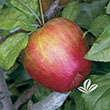
This cold-hardy apple variety produces juicy, crisp apples that ripen in early September. It grows 8 to 10' tall and has pinkish white flowers that appear in April. Best when paired with other early to mid-season blooming apple varieties.
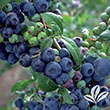
The 'Bluecrop' is a cold-hardy, disease resistant variety that produces abundant crops of large berries. Fruits will ripen in mid-July and are great for preserves, baking, freezing and fresh eating. This variety gets 4-6' tall and wide and will produce a larger crop when planted with other vareities. Does best in organically rich soil.

The 'Blueray' produces large, firm berries with extra sweetness, making them great for fresh eating and baking. Fruit will ripen mid-July, and this variety will bear a larger crop when paired with other pollinators. Can get up to 6-8' tall and wide, but can be pruned in late winter to maintain a managable size. The 'Blueray' is a great pollinator for other varieties. Does best in organically rich soil.
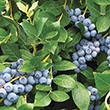
Duke' is a late bloomer and early-ripener, producing beatiful pinkish-white flowers in late spring and large, flavorful berries that ripen late-May to early-June. It produces consistently abundant crops and flourishes when paired with other pollinating varieties. This plant will reach 4-6' tall and wide and its extremely large berries have been known to grown as large as a quarter. Their tangy-sweet flavor makes them great for fresh eating, preserves and baking.
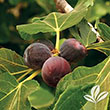
Brown Turkey' figs are a sought after variety, due to their cold-hardiness and delicious crop. They will bear sweet fruit in late-spring and early-summer and are great for fresh eating, preserves and drying. Will get 15-25' tall and wide. Self-pollinating, but will benefit from being planted in multiples.

The 'Celeste' fig variety is one of the most popular fig trees, due to its sweet, rich fruit that is great for fresh eating and long term storage. It is self-pollinating and fruit crop will ripen in July. The 'Celeste' grows an average of 10-15' tall and wide and requires minimal pruning. This variety is generally quite hardy, but will require winter protection in certain climates.
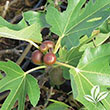
Fignomenal' is an exciting new fig variety that fruits year-round. The medium-sized figs are deep brown with a sweet, reddish interior, and 'Fignomenal' produces a prolific amount of fruit for its compact size. This dwarf fig has a low-mounding habit and only grows 28" tall making it ideal for container growing.
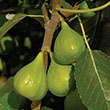
Lattarula' figs are a type of Italian honey fig. These fruits have a sweet, amber flesh and are great for fresh eating, drying and canning. They produce one crop in late-July and one in mid-September. They will average at 8-10' tall and 6-8' wide.
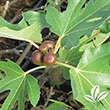
This compact variety grows 4-6' tall and 3-4' wide and is great for container gardening. 'Little Miss Figgy' produces dark purple fruits with sweet, rich amber flesh. This variety gives a consistent, abundant crop and can even continue fruit production when brought inside for the winter.
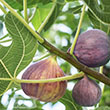
The 'Olympian' produces two crops of large, sweet fruit that is great for canning, eating and drying. It grows 10-12' high and 8-10' wide. This variety is self fertile, but will benefit when more than one is planted.

Peter's Honey' produces sweet, tender fruit that is delicious when eaten fresh. It ripens well in warm, city climates, and will do well if planted on the south-facing side of a house. It will average 15-25' tall and wide and will bear a crop in early-June and late-October.
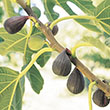
The 'Violet De Bordeaux' is known to be one of the best tasting fig varieties. It produces a fragrance, sweet, rich fruit that can be enjoyed fresh or dried, and makes a delicious jam. It grows 6-10' tall and 4-6' wide and will bear fruit ripening mid-summer to early-fall.